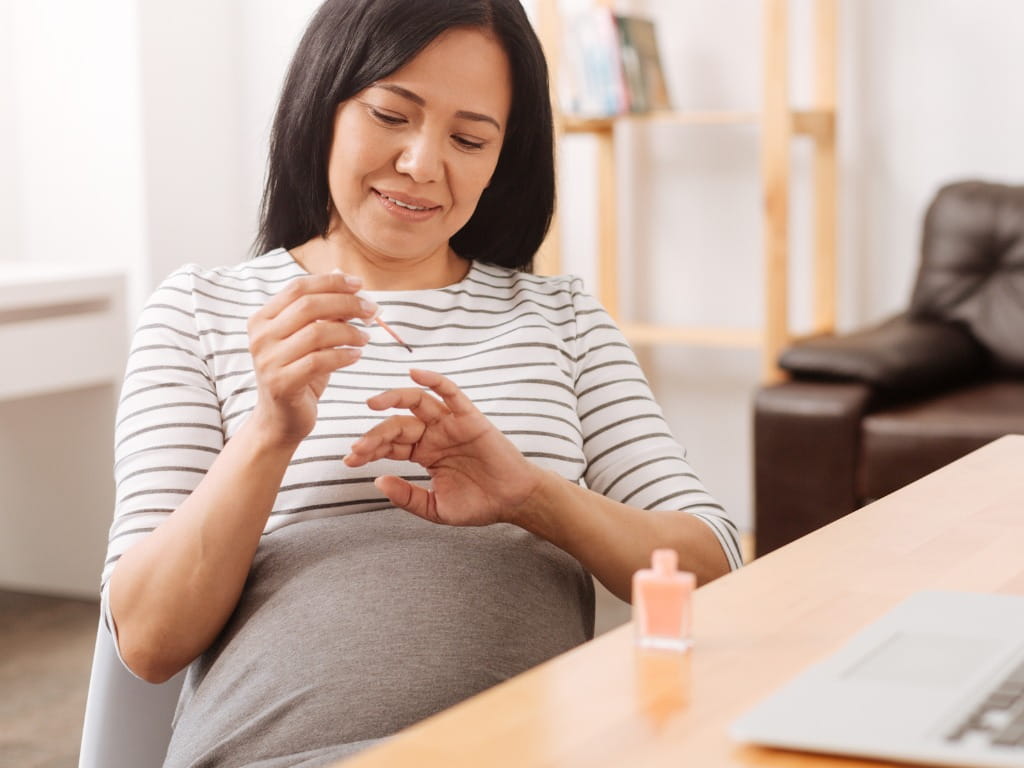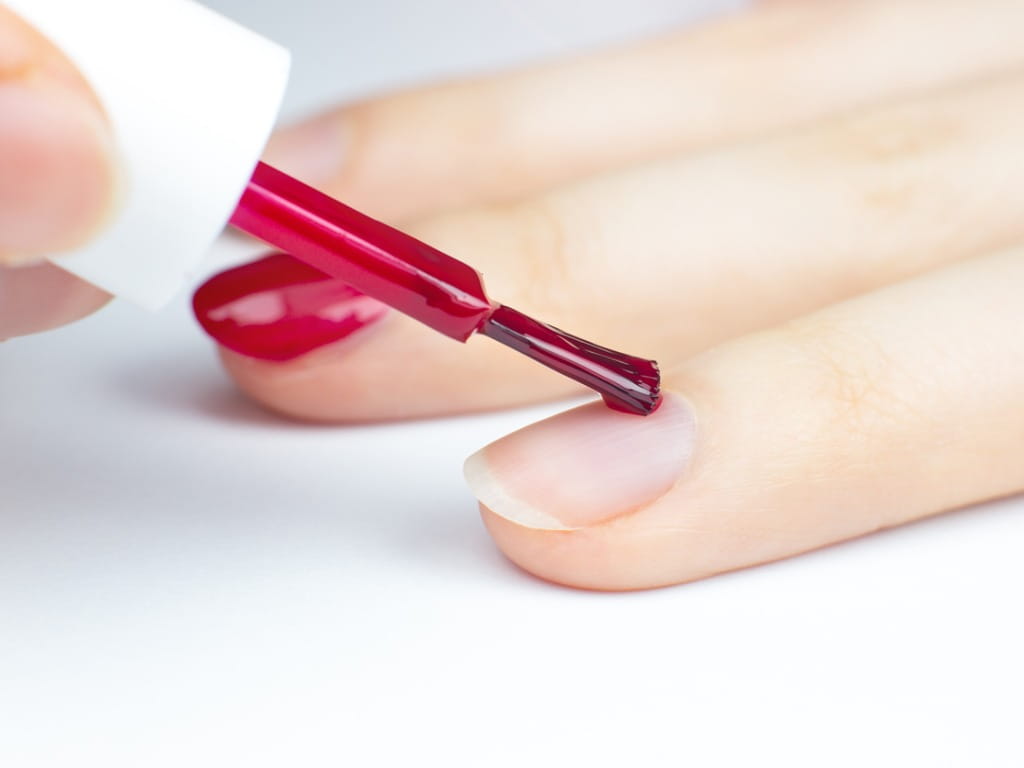Can I Use Nail Polish When Pregnant?

The Bottom Line
Nail polish contains chemicals that may have dangerous health effects after high-dose or long-term exposures. There is no evidence that occasional application of nail polish is harmful to pregnant women or fetuses.

The Full Story
Cosmetics and personal care products may contain chemicals that are potentially harmful to humans. Formaldehyde, toluene, bisphenol A and other plasticizers, and heavy metals are examples of potentially dangerous chemicals that have been found in cosmetic products. Because of the presence of these substances, some pregnant women may be hesitant to use cosmetic products, including nail polish.
Many formulations of nail polish contain formaldehyde, toluene, and plasticizers. What’s the risk of exposure to these ingredients of nail polish?
- Formaldehyde, an ingredient found in embalming fluid, is a preservative that is often added to nail polish. Formaldehyde is known to be harmful to humans, as it can cause cancer of the nasopharynx (the nose and upper throat). However, these cancers generally occur in individuals who were exposed to formaldehyde in the workplace, at high concentrations for a period of many years. Pregnant women who eat a balanced diet are likely exposed to formaldehyde on a regular basis, as it is naturally present in many foods including bananas, carrots, and pears. People who are exposed to formaldehyde in foods, or through occasional application of nail polish, are unlikely to develop adverse effects due to these exposures. In addition, there is no evidence that fetal harm occurs in pregnant women who are exposed to low levels of formaldehyde through nail polish application.
- Toluene is a solvent that is present in nail polish. When humans are exposed to high amounts of toluene, toxic effects on the nervous system, liver, heart, and kidneys may occur. Intentional exposures to high amounts of toluene by pregnant women, which may occur after “huffing” paint thinner or other toluene-containing products, are associated with adverse fetal health effects including premature delivery, birth defects, and neurologic problems. Fortunately, there is minimal evidence suggesting that occasional low-level exposures to toluene, such as occasional nail polish application, are associated with fetal harm.
- Plasticizers include bisphenol-A (BPA) and phthalates. These chemicals are added to plastic products to make them more flexible and are used in nail polish to prevent chipping. However, plasticizers are also associated with endocrine disruption and impaired fertility. While chronic exposures to BPA, phthalates, and other plasticizers may result in adverse health effects, it’s likely safe for pregnant women to have occasional exposures to these chemicals through nail polish application.
Even though formaldehyde, toluene, and plasticizers are associated with potentially dangerous health effects, there is no reason that pregnant women should avoid nail polish application completely due to the presence of these chemicals. One reason for this is that occasional low-level exposures to these chemicals are not associated with significant health effects in humans. In addition, fetal exposures are likely much lower than maternal exposures, making fetal toxicity much less likely. While the occasional application of nail polish to pregnant women is likely not going to result in harmful health effects, pregnant women who work in nail salons (and thus have long-term exposures to these chemicals over the duration of their pregnancy) may be at risk of harmful fetal effects.
Because occasional exposure to the chemicals found in nail polish is unlikely to harm a developing fetus, it’s safe for pregnant women to treat themselves to manicures and/or pedicures. Pregnant women can consider applying nail polish in a well-ventilated area to reduce the risk of chemical inhalation during manicures or pedicures. Some pregnant women may choose to completely avoid nail polishes that contain formaldehyde, toluene, phthalates, or other chemicals. Pregnant women who are concerned about exposure to chemicals in nail polish can also choose polishes that are labeled “3-free”, “7-free”, or similar, as these polishes do not contain these potentially worrisome chemicals. However, there is no evidence that any particular nail polish or brand is unsafe to use occasionally during pregnancy, so pregnant women are able to safely use any nail polish that is currently available, whether or not it is labeled as being “free” of certain ingredients.
For questions about adverse events from exposures to nail polish, contact Poison Control for expert advice. Get an immediate personalized recommendation online or call 1-800-222-1222. Both options are free, confidential, and available 24 hours a day.
Kelly Johnson-Arbor, MD
Medical Toxicologist
Poisoned?
Call 1-800-222-1222 or
Prevention Tips
- If possible, apply and remove nail polish in a well-ventilated area.
- Use cosmetic products only as directed on the package.
- Talk to your doctor about any chemicals that you are exposed to at home or work.
This Really Happened
In 2015, a survey was conducted of 128 French women who were pregnant or of childbearing age, to investigate their uses of cosmetic products during pregnancy. The most frequently reported changes in cosmetic product use during pregnancy involved body lotion, nail polish, nail polish remover, and hair dye. Ten percent of the surveyed women stopped using nail polish during pregnancy, and seven percent stopped using nail polish remover while they were pregnant. More than half of the surveyed women believed that the use of cosmetic products during pregnancy was risky.For More Information
A look at the effects of nail polish on nail health and safety (Harvard Health Publishing)
References
Poisoned?
Call 1-800-222-1222 or
Prevention Tips
- If possible, apply and remove nail polish in a well-ventilated area.
- Use cosmetic products only as directed on the package.
- Talk to your doctor about any chemicals that you are exposed to at home or work.
